
Initial Sky Tests: Rokinon 8mm 180° Fisheye Lens
Posted: 3 December 2012
I wasn't able to do any observing for awhile due to cloudy skies and a holiday trip. I took advantage of a "Cyber Monday Week" sale and purchased a Rokinon 8mm f/3.5 Fisheye Lens for my Nikon D7000 DSLR:
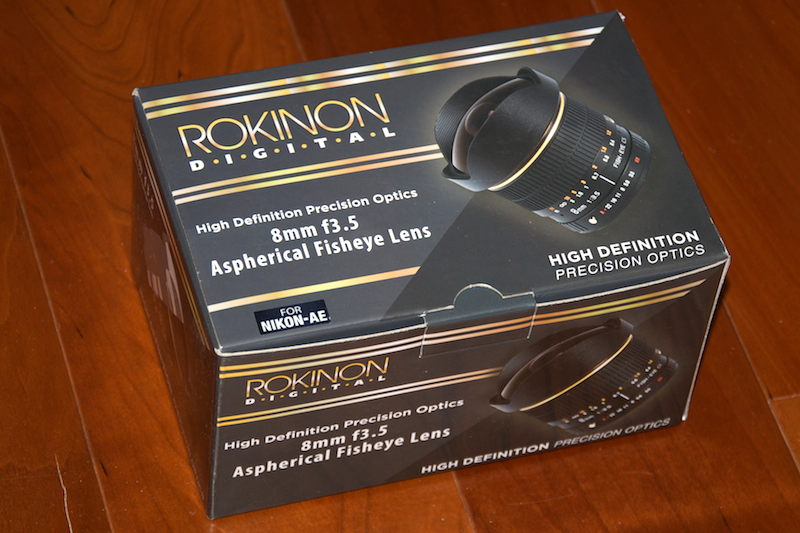
There are several models of the Rokinon 8mm f/3.5 Fisheye Lens available to match your DSLR manufacturer. Most models are totally manual (focus, aperture, shutter speed), but the model I purchased has automatic exposure control (aperture and shutter speed) with many Nikon DSLR models, including my D7000. Manual aperture control is also available using the aperture control wheel on the D7000 camera body. Focus control is manual on all models.
The lens comes with a soft cloth bag and a small manual (a must read as capabilities and usage differ depending on your DSLR model):
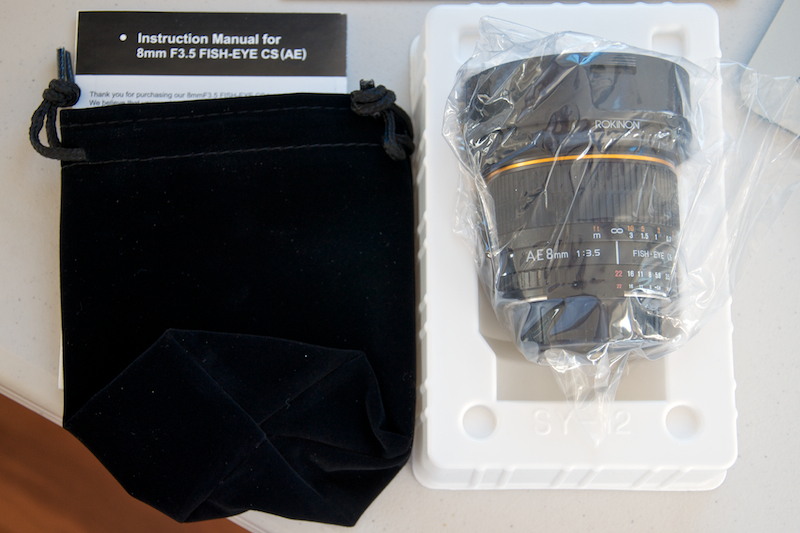
This is the lens on the D7000 DSLR:
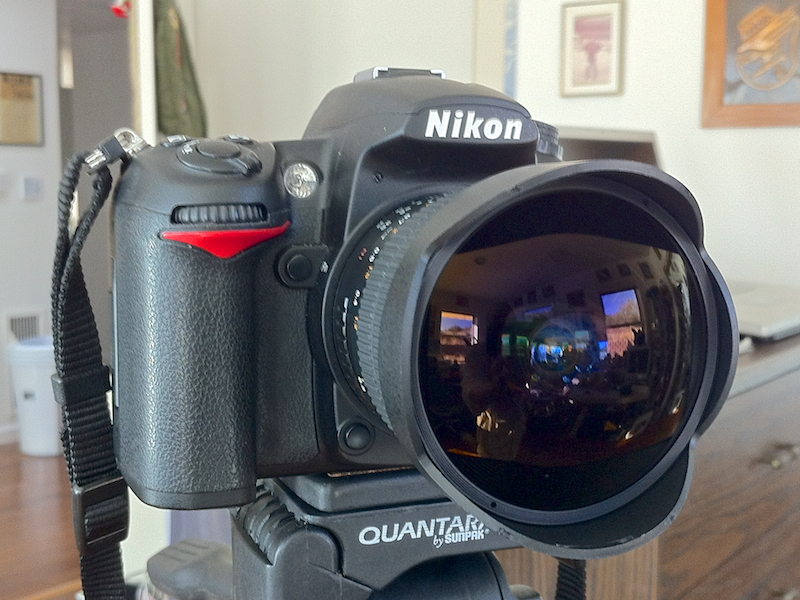
I plan to use the fisheye lens for sky photos, especially meteor showers and imaging the Milky Way. The lens arrived on Friday, 30 November 2012, and of course, clouds were coming in as sunset approached. I took this photograph of sunset, showing the 180° (diagonally) field-of-view (my observatory is at the lower left):

The photo above shows the "fisheye" effect, with a curved horizon. With the horizon placed in the middle, it will be straight. And then cropping the photograph makes a nice panorama:

On Saturday, 1 December, I used the lens to photograph Cassiopeia Observatory:
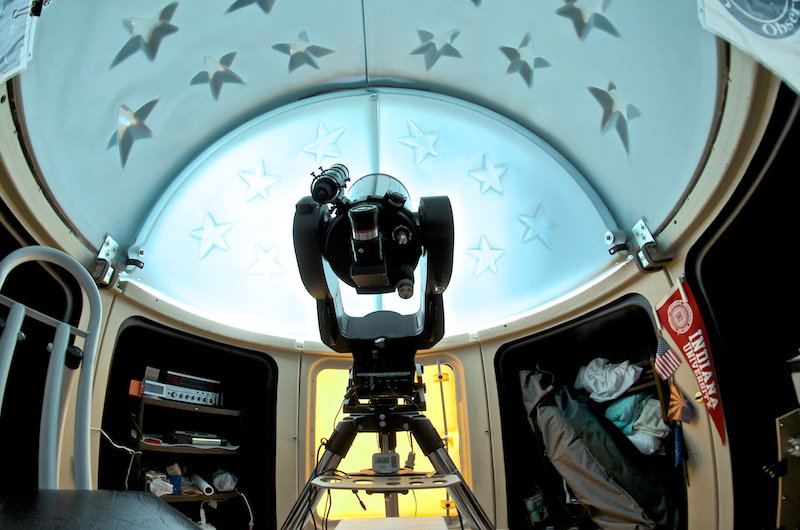
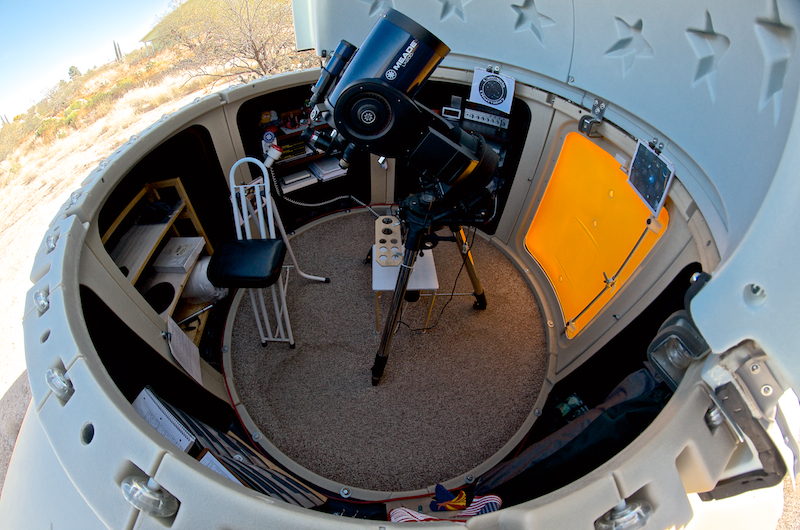
Obviously, the fisheye lens will be useful to photograph wide areas.
When imaging the night sky, the camera and lens will be mounted on a photographic tripod and pointed straight up, as seen here:
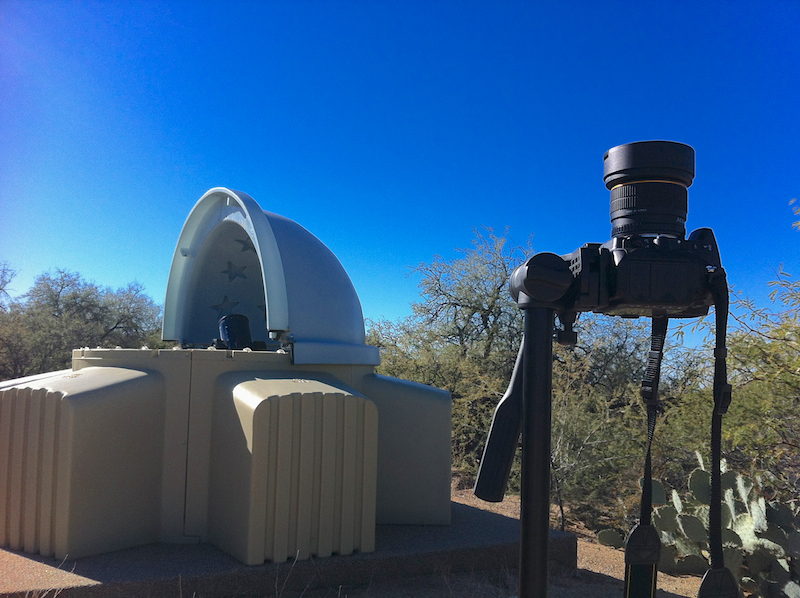
I expect to have a lot of fun using this new lens.
Finally the weather and schedule aligned, and the observatory was opened Sunday, 2 December 2012, at 2000 MST, 57°F. At 2008 MST, I took a quick look at Jupiter, which was at opposition, 77X. The Great Red Spot was rotating out of view. I then began setting up for wide angle sky photography using the fisheye lens. I used the Vello Wireless ShutterBoss Timer Remote for controlling the camera shutter release. I did several exposures from 30 seconds to 5 minutes, ISO 800, 1000, and 1600, at f/3.5 and f/5.6. Exposures of 2 minutes or longer showed star trailing. There was essentially no difference in image sharpness at f/3.5 vs f/5.6. Just to show what can be done with this lens, this is a 30 second, ISO 1600, exposure:
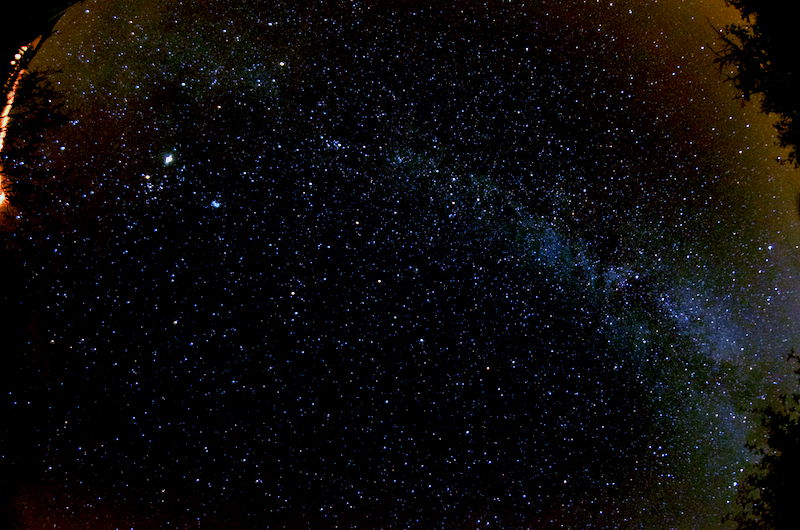
The photograph shows many constellations, including Orion rising at the left edge, Jupiter near Taurus, the Pleiades, the Double Cluster (above center), the Milky Way, and Lyra at the right edge.
I will do more tests with the lens, including piggybacking it on my ETX-90RA for tracking with longer exposures.
I ended sky imaging tests at 2103 MST as the waning gibbous moon was rising and brightening the eastern sky. At 2118 MST, I began doing Jupiter observing. I used my new Explore Scientific 2" 9mm 100° eyepiece (222X). All four Galilean Moons were visible, nicely spread out across the field-of-view. Although seeing was not ideal, there were some nice details visible in Jupiter's cloud bands. I then viewed Jupiter using the 1.25" 9.7mm (206X) and 5.5mm (364X) eyepieces, with and without a moon filter (to reduce glare from the planet). The best view was with the 9.7mm + moon filter.
At 2133 MST, I began setting up for iPhone afocal imaging, 444X + moon filter, with the iPhone 4 mounted on the 8" LX200-ACF using the MX-1 afocal adapter. I used the iOS app FiLMiC Pro to take videos of Jupiter. This is a stack of 1459 frames (60 seconds of video):
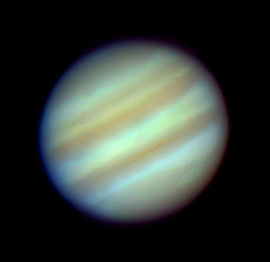
At 2200 MST, I resumed Jupiter observing. Seeing was better now and the view was very good at 364X. I then did some lunar observing although the moon was still low in the eastern sky. The views through the 2" 9mm 100° eyepiece were awesome. I then returned to Jupiter, at which point the music from the movie "2001: A Space Odyssey" began playing on my iPod. That was enoyable.
I had to end the session early. Closed the observatory at 2225 MST, 53°F.
Comments are welcome; use the Comments section below, or you can Email Me. Thanks.
Go to the previous report.
Return to the Cassiopeia Observatory Welcome Page.